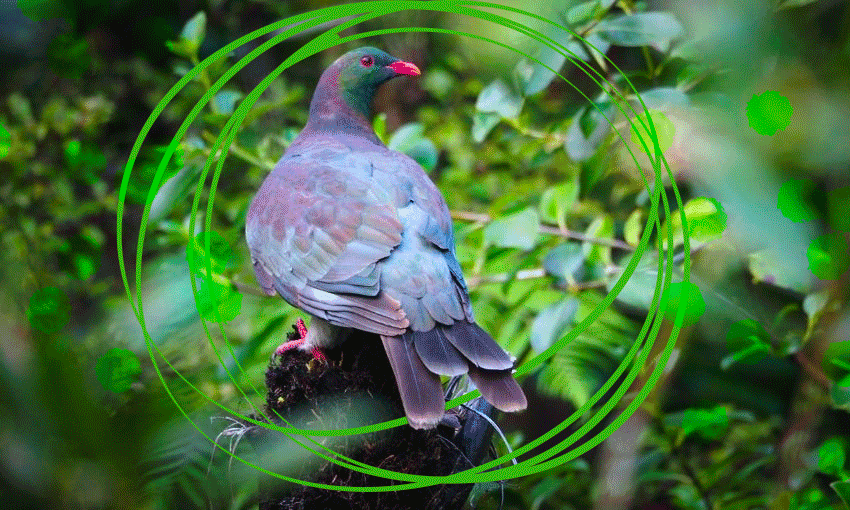How citizen science is helping to reveal the state of our feathered friends.
This is an excerpt from our weekly environmental newsletter Future Proof – sign up here.
The annual Garden Bird Survey took place last week, calling on citizen scientists across Aotearoa to count the birds in their backyard, or at their local school, park or marae.
On a chilly morning, I took a woolly blanket, a cup of hot coffee and a bird tally sheet out into the garden. I sat and watched and listened for an hour. Two kākā screeching, several tūī robot-singing, the coos of spotted doves – I was surprised by how much I heard. I scanned the greenery and spotted the beefy white singlet of a kererū. I was reminded how lovely it is to take a moment in nature – and that it doesn’t need to be big, breathtaking nature. It can just be a fantail twittering on a perch in your urban backyard.
This sense of connection – and curiosity, joy and wonder – is widely reported among survey participants, Gradon Diprose told RNZ. “It’s not going to solve climate change or the biodiversity crisis, but it can help improve our immediate well-being, while taking action to monitor bird trends with thousands of other people.”
The Garden Bird Survey, which has been run by Manaaki Whenua since 2007, allows scientists to track how birds are faring over time. For example, the 2022 State of NZ Garden Birds report found positive signals for four iconic backyard species: kererū, tūī, tauhou (silvereye) and pīwakawaka.
The Garden Bird Survey isn’t the only avian census mobilising bird enthusiasts: the New Zealand Bird Atlas project is cataloguing as many bird species as possible across the whole of Aotearoa. The project builds on two previous national bird mapping efforts, one in the 1970s and the other in the early 2000s. In each of these, the country is split into 3,200 10x10km grid squares and keen “atlasers” are deployed to record as many birds as possible across all four seasons.
Data collection on this scale takes several years – the current iteration runs from 2019 to mid-2024. But it is already yielding valuable data on the state of our unique avian fauna, used by scientists and decision-makers alike.
In a recent issue of New Zealand Geographic, Gabi Lardies joined some “bird nerds” on their counting adventures. Last weekend, I joined in briefly too, for a visit to Pakiri Beach on a squally morning. We saw variable oystercatchers, white-fronted terns, northern NZ dotterels, a banded dotterel and two shag species – a small count that will nonetheless add up into a big, birdy picture of the nation through the Atlas.
